Its history is storied; its legends are true, and the remarkable lineage of the Glenlivet is one that has shaped the landscapes of Scotland and created what are known today as whisky’s most treasured isles.
The Glenlivet 12 was one of the first whiskies I ever tried, second only to The Balvenie. As the world’s most popular single malt Scotch, The Glenlivet is often the predominant whisky sold in restaurants and bars across much of North America and the rest of the world. Typically, if a restaurant or bar only has two bottles of whisky one will be The Glenlivet 12 and the other Glenfiddich or something else.
Today’s article is all about Glenlivet. If you are new to Scotch, I recommend you read the Scotch 101 Beginner’s Guide first, followed by the Scotch Whisky Guide.
Glenlivet
With fifteen copper pot stills, The Glenlivet produces an astounding six million bottles of whisky each annum breaking the records for the largest output of whisky in the world.
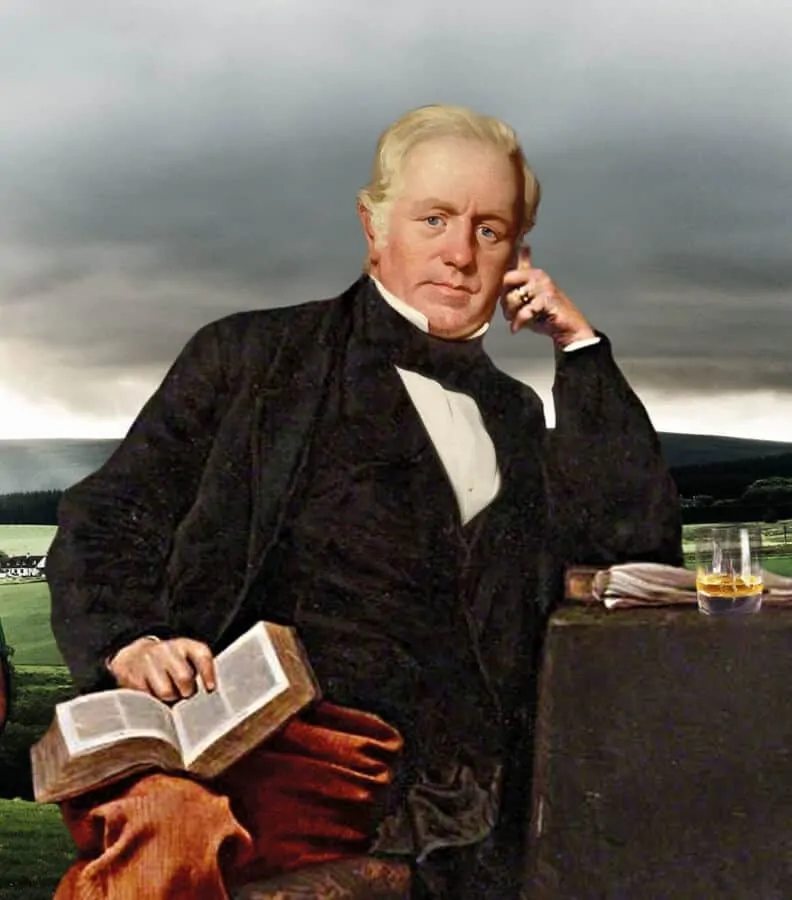
The Illustrious History of The Glenlivet
Like a historical period piece or an epic theatrical release, the story of The Glenlivet is rife with every facet one seeks in an entertaining tale. Prior to the Excise Act of 1823, distilleries throughout Scotland were mostly unlawful until the Excise Act was passed allowing legal distilleries to be formed provided they held the required license. A forerunner of the act was a Scot named Alexander Gordon, the fourth Duke of Gordon, who had a tenant named George Smith, who produced illicit whisky until the act was initiated. Once the legislation passed, Smith became the first person in Glenlivet, Scotland to apply for and be granted a license allowing him to legally set up shop.
This is how The Glenlivet came to be, but it wasn’t without its fair share of controversy. Since most of the whisky producers at the time were still operating illegally, they harbored resentment against Smith as support of the new law meant that it would be that much harder to repeal it. Threats were made against Smith, and his landlord gave him two pistols to defend himself and the distillery against the tyrants. He succeeded and within a year, he opened The Glenlivet Distillery in Upper Drumin with his youngest son, John Gordon Smith.

Business boomed and by the middle of the century, Smith was running beyond full capacity and had to open a second distillery that he named the Cairngorm-Delnabo Distillery. Despite doubling production, within five years both distilleries were at full capacity and having difficulty meeting the demands. Realizing the expense of running two separate distilleries, Smith hired an architect to draft plans for a state-of-the-art facility that was far larger, but still offered room to grow into. Without space at either facility, they moved down the hill to Minmore and construction began after a fire ripped through the old Upper Drumin distillery in 1858. As a cost savings alternative, they salvaged as much of the equipment as they could from the burned distillery. The Delnabo distillery was subsequently shut down, and all the equipment was transferred to the new plant at Minmore. By 1859, production began at the new distillery, and the name of the company was changed to George & J.G. Smith, Ltd.
John Takes Over & Defends The Brand
Following the death of George Smith in 1871, his son John inherited the distillery. Since the senior Smith was such a prominent name and the quality of their whisky was so exemplary, many of the local competition began to rename their products, branding them as “Glenlivet”. This infuriated J.G. Smith and he took immediate action to claim ownership of the name “Glenlivet” in the court of law. Despite only being somewhat successful, the verdict did force the other distilleries to cease the use of the name and gave Smith the sole and exclusive rights to use it as their brand. However, it also stipulated that other distilleries in the Glenlivet region could continue to use the term “Glenlivet” in a hyphenated name such as the Speyside based Glen Moray-Glenlivet Distillery.
Production Stop During WWII
Despite this legal loophole, The Glenlivet still managed to successfully differentiate itself from its competitors and was even able to remain in business throughout the Great Depression which saw many distilleries close its doors. In fact, unlike many distilleries, the only hiccup in production was during World War II when the distillery was forced to cease operations by Government decree.
However, following the war, Britain was in such massive debt that the distillery was able to almost immediately reopen for business since they needed to export as many goods as possible to obtain foreign revenue from the United States of America as well as other countries from the four corners of the globe. Since whisky was in such demand overseas, The Glenlivet proved to be almost an immediate success, rocketing it back to its previous levels of full capacity. The restrictions placed on distilleries began to be lifted, and when resources ran short, the government imposed bread rationing throughout the United Kingdom to ensure that The Glenlivet had enough grain to produce its whiskies.
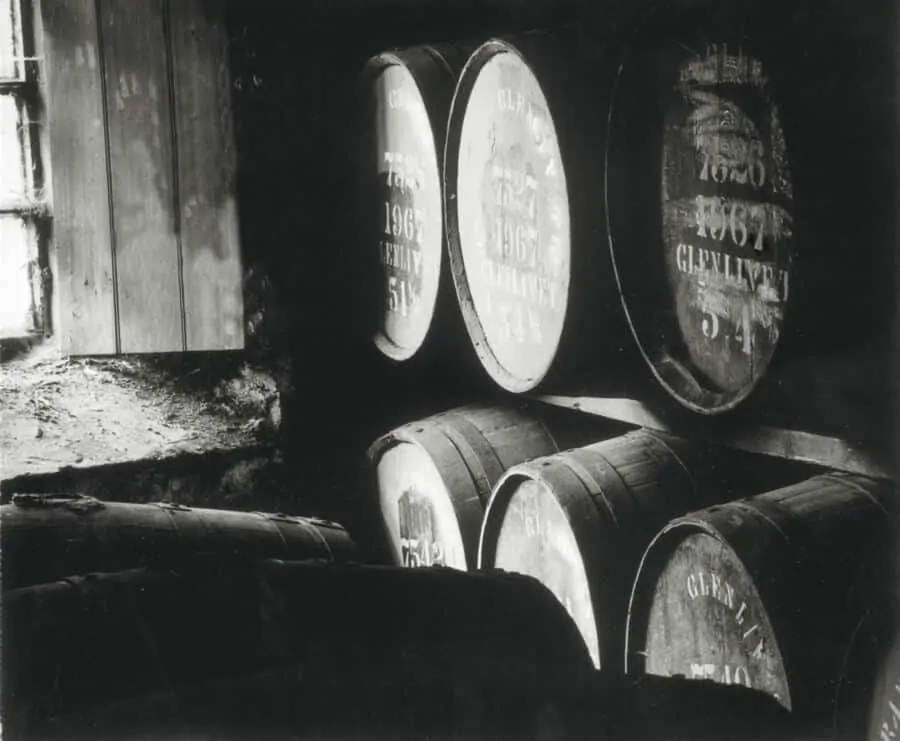

As The Glenlivet distillery continued to grow in rapid fashion, it completed a series of strategic mergers and acquisitions to secure its place at the top of the industry. Although not much has changed over the years with respect to its production process, the company has passed through hands of a number of parent companies before being acquired from Seagrams by Pernod Ricard and Diageo. As part of that acquisition, The Glenlivet was separated from its longtime subsidiary Glen Grant Distillers and made a wholly-owned subsidiary of Pernod Ricard with Glen Grant being further sold to the Campari Group in 2005.
Despite the seemingly ongoing trade of the company, The Glenlivet remains the world’s second best-selling single malt whisky taking lead in the United States and hold the fourth place in the United Kingdom with roughly 7% market share.
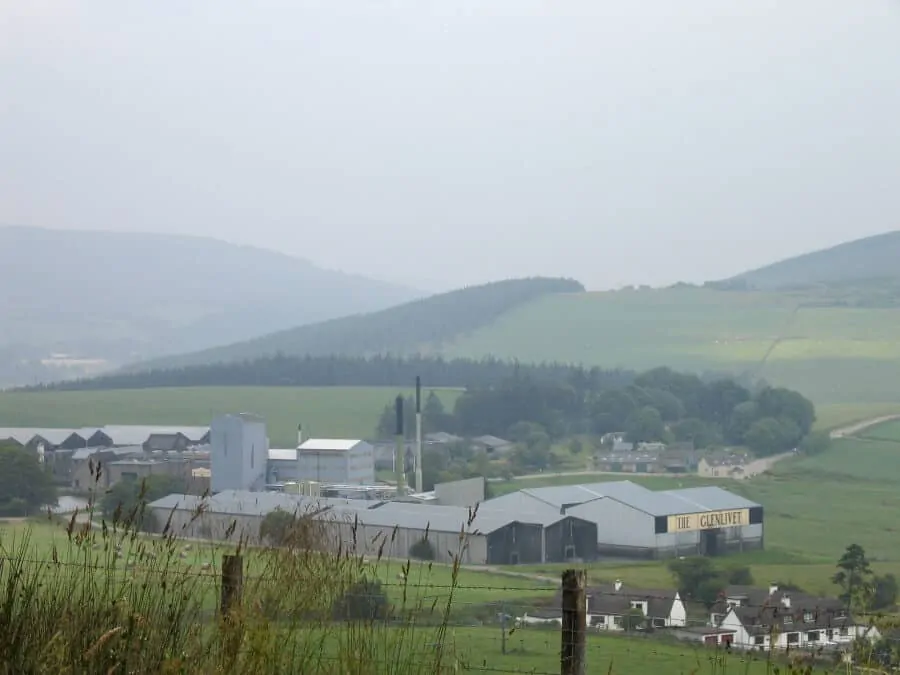
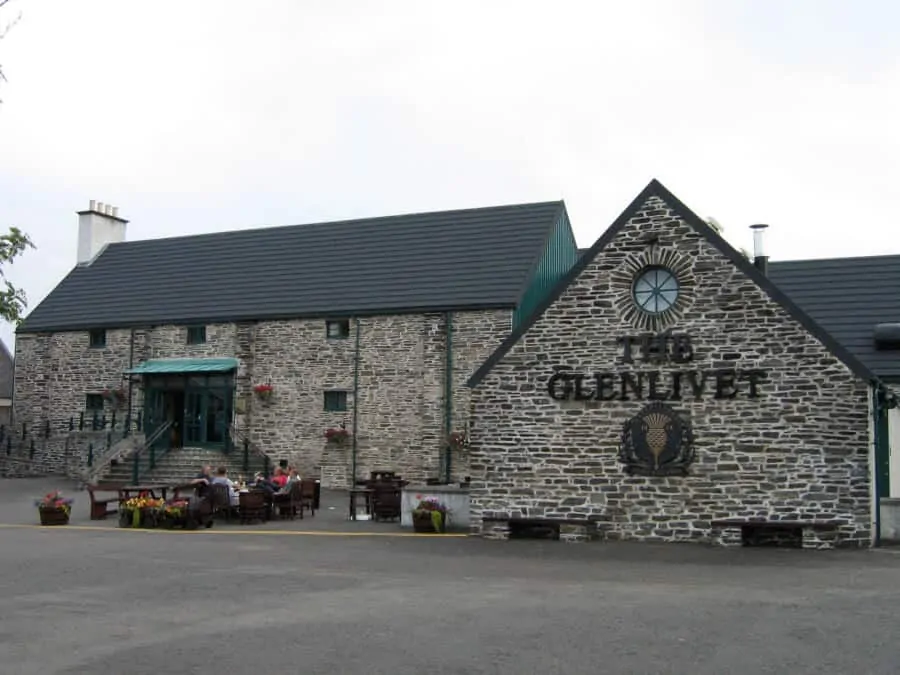
The Valley of the Livet
The Glenlivet, roughly translated from Gaelic means ‘Valley of the Livet’. It is most notable for its exceptionally smooth taste and finish and is commonly regarded as a perfect dram for the novice drinker.
The smooth taste of The Glenlivet whiskies is due largely in part to the distillation and maturation process. The distillery uses large copper pot stills that resemble lanterns. They were originally developed by George Smith and are still designed in the same way today. Due to the width of the necks, the whisky receives maximum contact with the copper and the incredible height of the still ensures that only the lightest vapor reaches the top where it cools, condenses and becomes the beginning of what we enjoy from the bottle.
Of course, another big part of the smooth flavor profile is the water that comes from the renowned Josie’s Well, capable of producing 3500 gallons of pure, cold water every hour. Supplemented by the Blairfindy Well, the water source’s purity mixed with barley from Crisp Maltings in Portgordon helps to ensure a consistently smooth taste from one bottle to the next.
The fifteen copper pot stills in the expansive distillery manage to produce some of the finest bottlings of Scotch that much of the world enjoys.
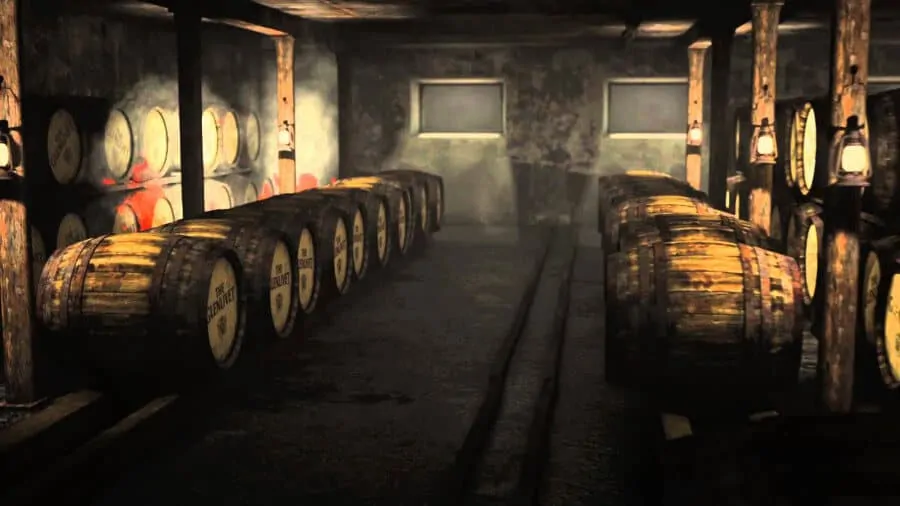
The Production Process
Surprising to many, is that the initial stages of making The Glenlivet take place outside the distillery where master maltsters soak the hand-selected barley in the distillery’s water source for a number of days. Once it’s beginning to germinate, and shoots begin to appear, they heat and dry the barley without the use of peat to ensure that the barley’s natural aroma and flavor profiles remain.
At this point, the dried malt is carted to the distillery where it’s ran in batches through the grinding mill to create the grist. The grist is then introduced to hot spring water in one of the distillery’s mash tuns that use mechanical arms that stir the mixture. As the starches convert to sugar, the wort is transferred to a wooden wash back to cool, and yeast is introduced to it. After two days, the wash is usually about 8 or 9% alcohol. The wash is poured into the copper pot still and heated until the alcohol evaporates. As the light vapors begin to reach the top, they cool and condense into low wine that has an ABV of about 21%.
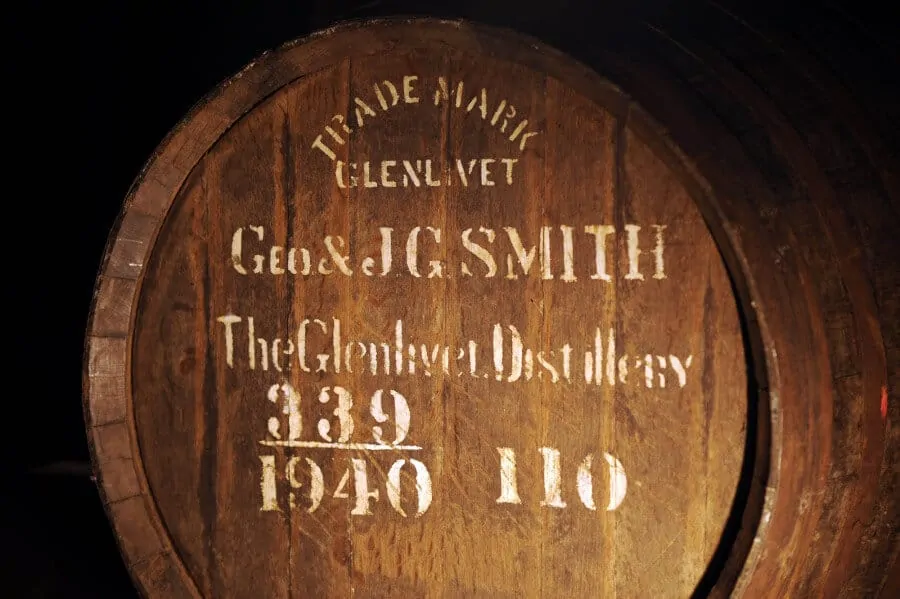
The whisky is then distilled a second time in the spirit still. Once it’s cooled, the remaining liquid is divided equally amongst three cuts by the master Stillman. The heads, which is the highest ABV is taken out first, followed by the heart and finally the tail of the whisky that is the lightest. The heart is placed into the receiver whereas the head and tails are remixed to create more whisky.
The newly produced spirit is then taken to Keith where the ABV is slightly reduced before the whisky is poured into specially selected French and American oak casks. The whisky is left to mature for a minimum of 12 years but often as much as 25 or more. Finally, once it has been aged for the required time, it is bottled and sold in stores where we are given the opportunity to enjoy a single malt whisky that has remained virtually unchanged for the last 150 years.

The Glenlivet Whiskies
While some limited release and special edition whiskies have been produced, there remains a core lineup of whiskies consistently distilled by The Glenlivet.
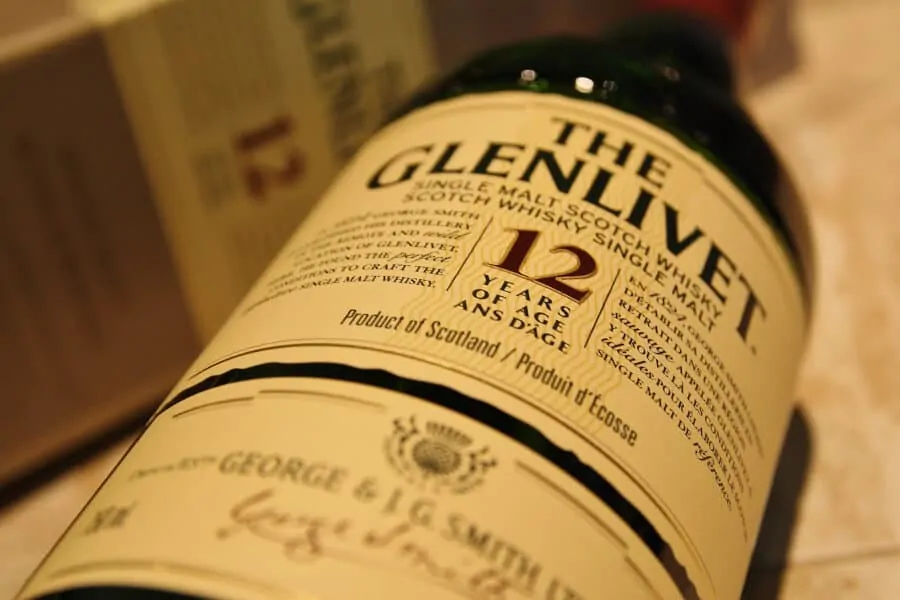
The Glenlivet 12 Year Old
Probably the most iconic and arguably, one of the most popular whiskies in the world, The Glenlivet 12 is one of the best-selling single malts throughout history. It was the second whisky I tried a little over a decade ago, and it still retains a special place in my home bar. However, it’s no longer for me.
The Glenlivet 12 is comparable to a product like Budweiser or a Charles Shaw wine. While popular, it isn’t a whisky that most enthusiasts crave. It’s basic, it’s mediocre and it lacks something we in the whisky world refer to as “good”. It is a perfect dram for the masses and an excellent starter for the novice, but if you truly enjoy the very best that whisky has to offer, this is one dram worth leaving on the shelf. I did say it had a special place in my bar, and that’s true. It’s brought out for those who doesn’t appreciate the finer drams or for someone who perhaps hasn’t had the opportunity to try a dram of Scotch before. If you’re new to the world of whisky, click here to learn the basics.
The Glenlivet 15 Year Old French Oak Reserve
The Glenlivet 15 is a slightly more engaging and alluring whisky with a little more spice than its younger brother but with a distinct creaminess that’s achieved by aging it in Limousin casks. It’s a very ‘safe’ whisky and has been imitated by many other whisky distilleries since it’s such a sellable and easily marketed dram. It’s only slightly more intense than the 12 year, but its flavor profile is far more distinct and enjoyable for those who appreciate a finer dram.
The Glenlivet Nàdurra 16 Year Old
Bottled at cask strength, the Nàdurra is a far more bold and inspiring bottling from The Glenlivet. Slightly more traditional with the elimination of chill filtration, the Nàdurra is significantly richer with a full mouth feel and strong notes of pepper and spice with a ravishing hint of vanilla bean and cinnamon. It’s important to note that for those not familiar with chill filtration, that this particular bottle may appear cloudy due to having more natural oils from the grains.
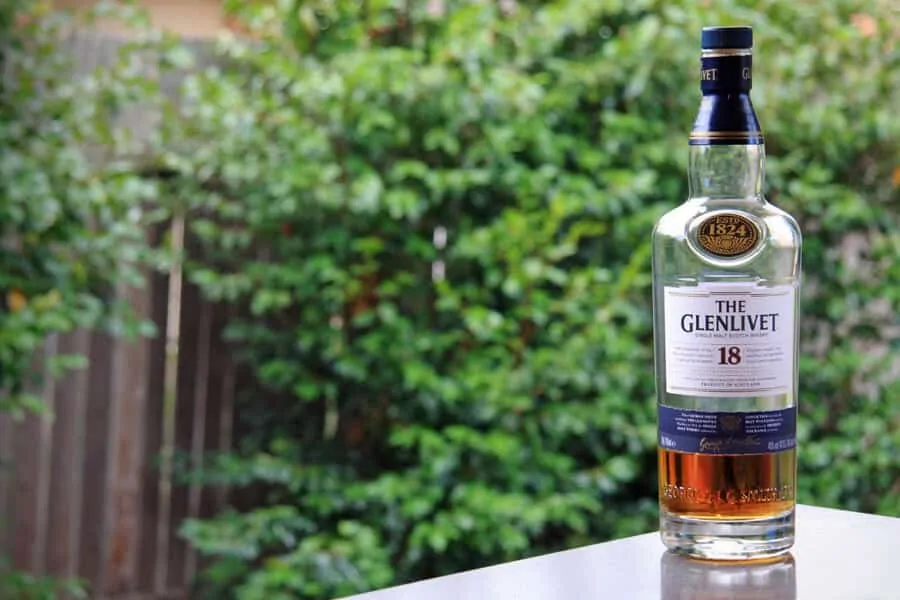
The Glenlivet 18 Year Old
One of the benefits of being the Master Distiller at Glenlivet is that Alan Winchester can choose from one of the largest collections of casks for aging his whiskies in. The 18 Year is a perfect demonstration of what The Glenlivet is capable of achieving in under 20 years. It’s rich and complex with a medium body and uncharacteristically long finish that is nutty with breathtaking notes of fresh flowers, tropical fruit and sea-splashed stone. Using both American and French casks, Winchester has managed to achieve a unique flavor profile with varying notes of creamy vanilla and lingering spice. As far as The Glenlivet whiskies are concerned, this is a good starting place for those with an appreciation for the dram.
The Glenlivet Archive 21 Year Old
The Glenlivet claims that its 21 Year bottlings are bespoke. Whether that’s true or not, the fact is the flavor profiles do vary considerably by the bottle. Made in small batches, each cask is hand selected, nosed and approved by Alan Winchester, and only the very best casks are picked for this archival bottling. Despite each batch having a different profile, they all ring in the same rich, intense character that the 21 Year is known for. It’s a bit of a gamble with this particular bottle but if you’re a poker player like me the risk may be well worth the reward.
The Glenlivet XXV 25 Year Old
Age aside, this is my favorite bottling of The Glenlivet and one that is worthy of your consideration. In the end, even those who pass judgment on the younger whiskies from The Glenlivet will probably enjoy the complexity and flavors from this truly interesting and, almost/maybe/close to exceptional dram.
Full of nuttiness and spice, the whisky is aged in Oloroso Sherry casks that provide it with a seductively silky mouthfeel and full-bodied flavor. It’s a beautiful whisky and one you might want to consider having in your collection for those who don’t believe The Glenlivet can make an award-worthy whisky for the true aficionado.
Conclusion
The Glenlivet has never and probably will never be one of my favorite distillers in the world, let alone in Scotland. However, the fact is that it’s one of the most popular. Now, let’s be clear, I in no way harbor any resentment for their drams and, in fact, I enjoyed a dram of their 12 year just last week. However, it’s not my first pick when it comes to selecting a whisky for myself, but is almost always on the top 5 list when I’m suggesting one for a novice. It’s a great introduction to Scotch and doesn’t have the “harshness” so many people speak of when referring to whiskies like Lagavulin of Laphroaig. If you’re looking for a basic dram to keep in your bar for guests, try the 15 or 18 year. For newbies consider the 12 and for you, try the 25. I promise you won’t be disappointed if you follow that advice and for the price, you just can’t go wrong.
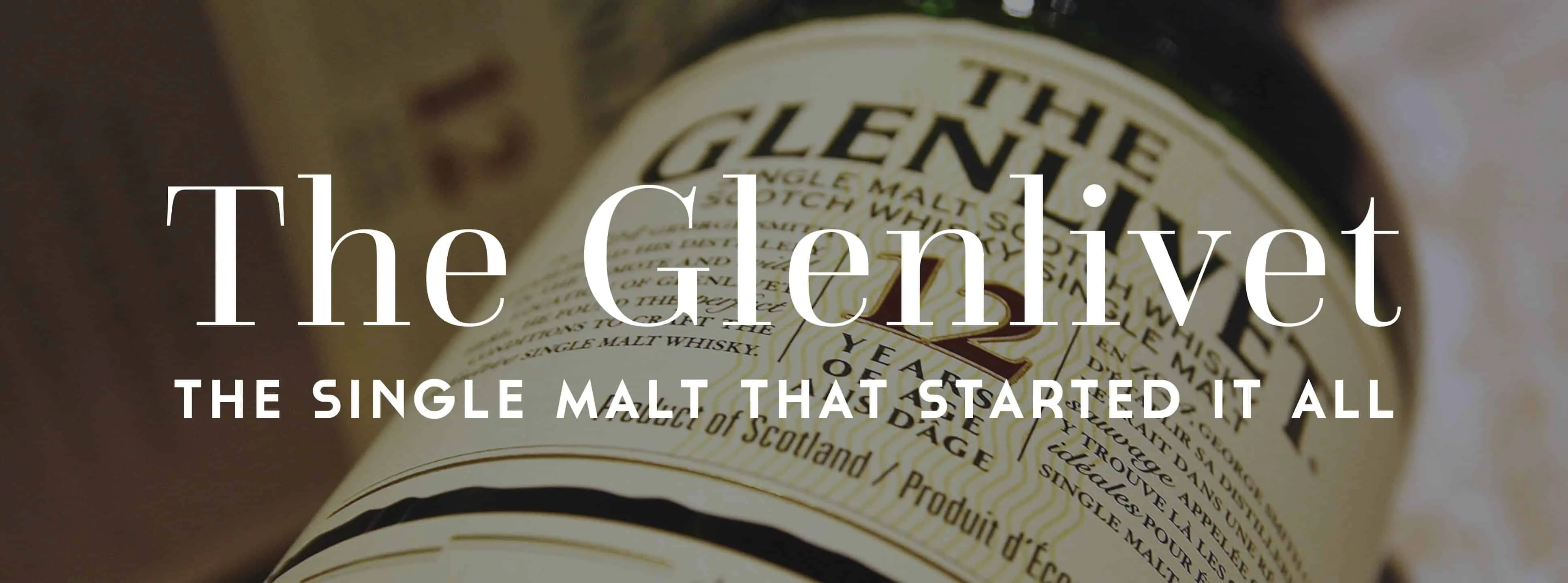
MY PERSONNAL TOP 5
1 OCTOMORE
2 PENDERYN
3 JURA SUPERSITION
4 JURA PROPHECY
5 JURA 16 ANS
Never bit a big fan of GlenLivet. Any of them for a matter of fact. But they are quite accessible for most. I perfect the taste of the 18years old, but its too expensive. I get the same “fun” with a GlenFiddich 15… or 14, if ever you can find it that is.
The 16 year old Nadurra is one of my favorites.
With fifteen copper pot stills, The Glenlivet produces an astounding six million bottles of whisky each annum breaking the records for the largest output of whisky in the world.
#Wrong
What are you claiming is “wrong”? Perhaps you could elaborate?